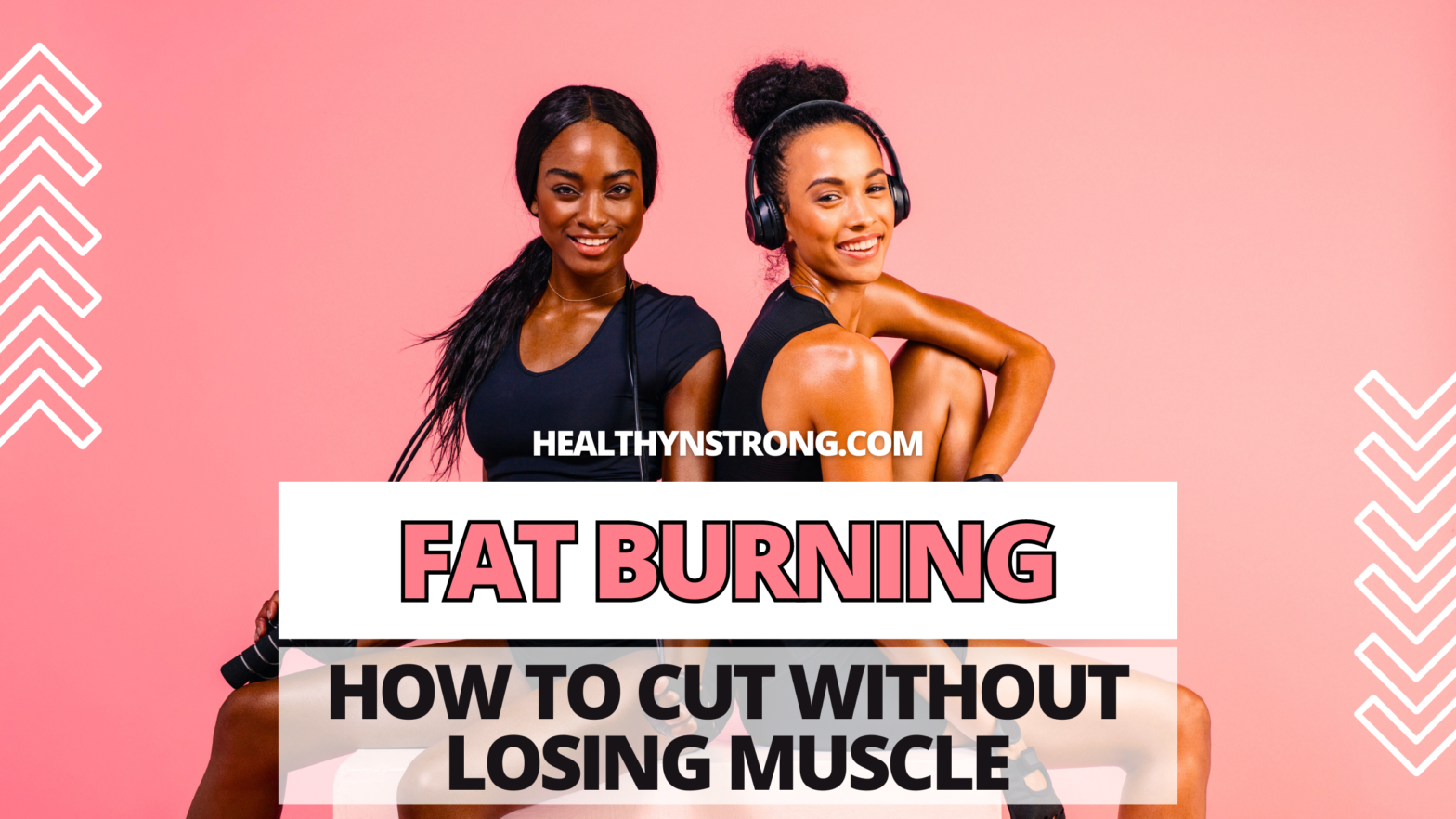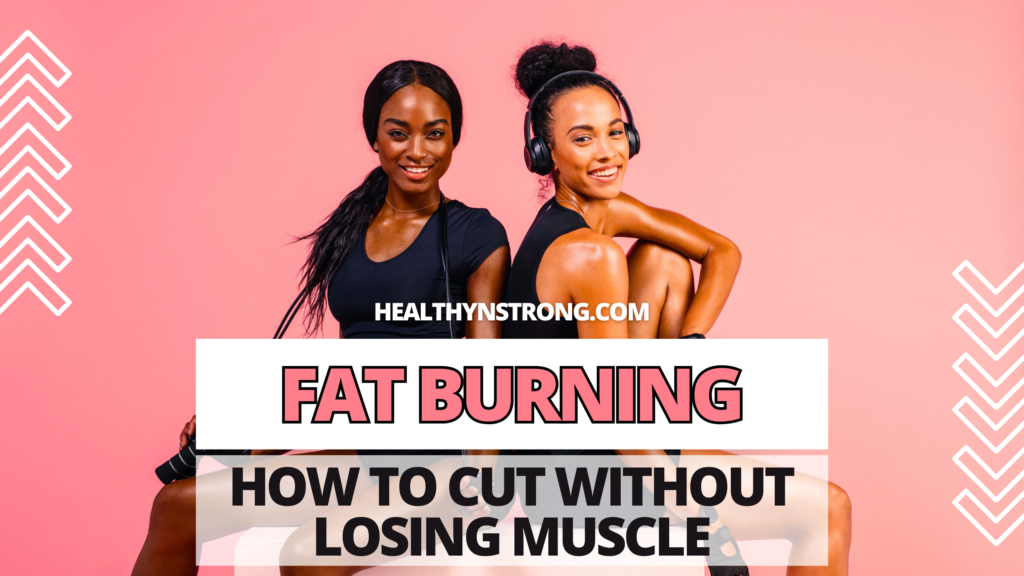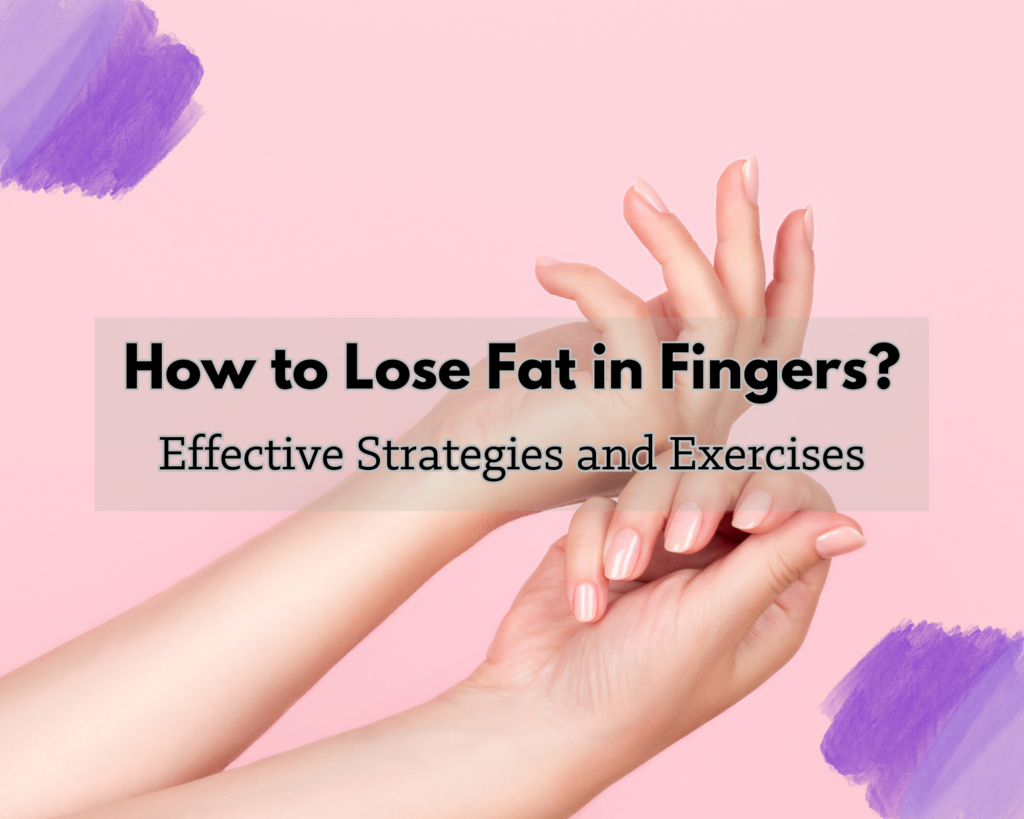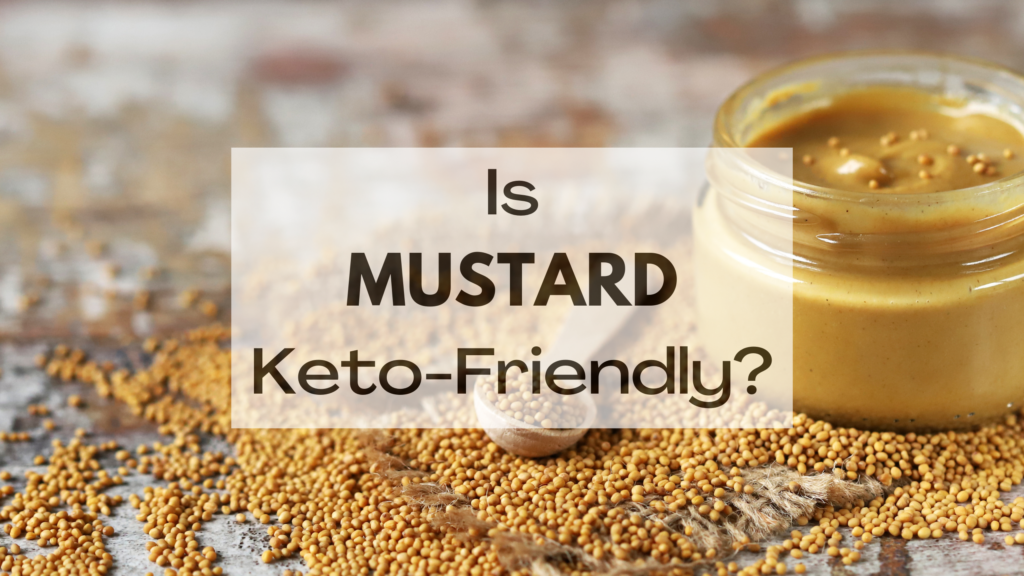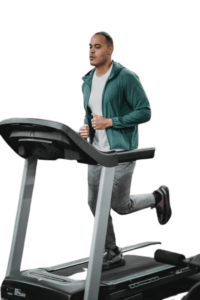Introduction
Welcome to the ultimate guide on how to cut without losing muscle.
Whether you’re a bodybuilder, athlete, or simply looking to shed those extra pounds, finding the balance between fat loss and muscle preservation is crucial.
This comprehensive guide will provide you with effective strategies and techniques to help you achieve your goals while maintaining and even building muscle.
From understanding the basics of cutting to practical tips on nutrition, training, and recovery, we’ve got you covered. So let’s dive in!
Understanding the Basics of Cutting
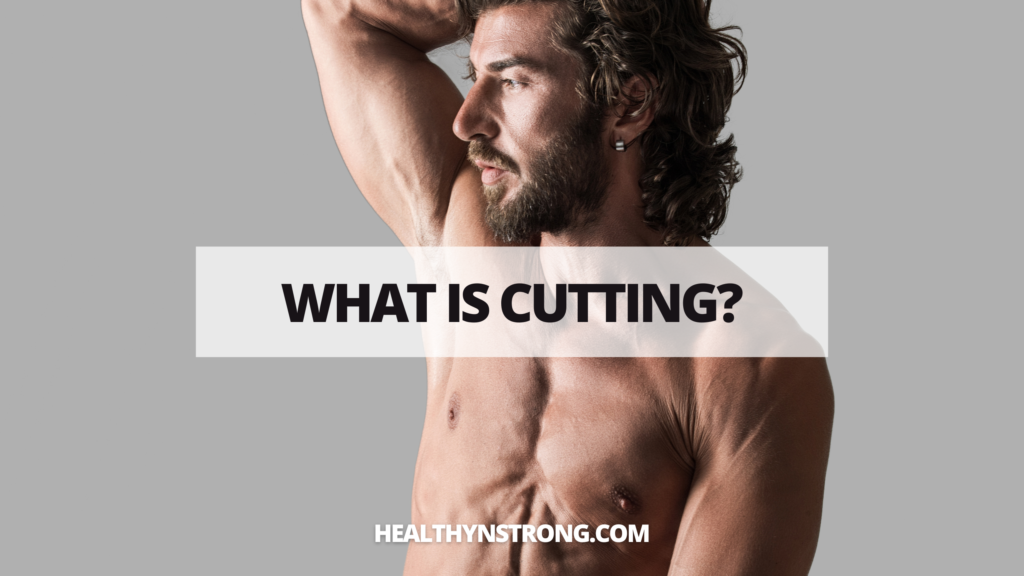
Before we delve into the specifics, let’s first understand what cutting entails.
Cutting refers to the process of reducing body fat while preserving lean muscle tissue.
It’s commonly practiced by individuals who want to achieve a leaner and more defined physique.
However, it’s important to approach cutting with a well-planned strategy to ensure optimal results and minimize the risk of losing hard-earned muscle.
The Importance of Maintaining Muscle Mass
Why is it crucial to maintain muscle mass during a cutting phase?
Well, muscle is metabolically active tissue, meaning it burns calories even at rest.
By preserving muscle mass, you can boost your metabolism, making it easier to maintain long-term fat loss.
Additionally, retaining muscle helps to maintain strength, enhance physical performance, and promote overall health and well-being.
How to Cut Without Losing Muscle: Strategies and Techniques

Now that we understand the significance of preserving muscle mass, let’s explore practical strategies and techniques to cut effectively without sacrificing your hard-earned gains.
Calorie Deficit
To lose body fat, you need to create a calorie deficit, which means consuming fewer calories than your body needs for maintenance.
However, it’s essential to strike the right balance to avoid excessive muscle loss.
Calorie Calculator
Calculating your daily calorie needs using a reliable calorie calculator can provide a starting point for your cutting phase.
A calorie calculator is a tool that estimates the number of calories a person needs to consume in a day based on various factors such as age, gender, weight, height, activity level, and weight loss or maintenance goals.
The calculation is typically done to help individuals manage their weight by understanding their daily energy needs.
There are different formulas and methods used in calorie calculators, but many are based on the principles of the basal metabolic rate (BMR) and total daily energy expenditure (TDEE).
The BMR represents the number of calories your body needs at rest to maintain basic physiological functions, while TDEE takes into account your activity level.
Using a calorie calculator can be helpful if you’re trying to lose, gain, or maintain weight.
By knowing the estimated daily calorie needs, you can better plan your diet and adjust your calorie intake accordingly to achieve your health and fitness goals.
Here’s a calorie calculator for you. Just input your personal information and receive an estimate of their daily calorie requirements.
Calorie Calculator
Keep in mind that this calculator provides rough estimates, and individual variations may exist.
Consulting with a healthcare professional or a registered dietitian can provide more personalized advice based on specific health needs and goals.
High-Protein Diet
A high-protein diet is a key component of cutting without losing muscle. Protein is essential for muscle growth, repair, and maintenance.
Aim to consume around 0.8-1 gram of protein per pound of body weight per day. Include lean sources of protein such as chicken, turkey, fish, eggs, tofu, and legumes in your diet.
Resistance Training
Maintaining strength and muscle mass during a cut is dependent on consistent resistance training. Incorporate compound exercises such as squats, deadlifts, bench presses, and overhead presses into your routine.
Focus on progressive overload, gradually increasing weights and volume to stimulate muscle growth and prevent muscle loss.
Cardiovascular Exercise
Cardiovascular exercise can aid fat loss during a cutting phase. However, it’s important to balance cardio with resistance training to minimize muscle loss.
Perform moderate-intensity cardio sessions for 30-45 minutes, 3-4 times per week. Consider incorporating interval training and low-impact activities like swimming or cycling to minimize stress on joints.
Proper Hydration
Staying hydrated is often overlooked but plays a crucial role in preserving muscle mass. Water helps transport nutrients to muscles and supports optimal muscle function.
Aim to drink at least 8 cups (64 ounces) of water per day. Increase hydration during intense workouts or hot days.
Adequate Rest and Recovery
Sufficient rest and recovery are essential to avoid muscle loss and optimize overall health.
Adequate sleep, typically 7-9 hours per night, allows your body to repair and rebuild muscle tissue.
Incorporate rest days into your training routine to give your muscles time to recover and grow.
Supplementation
While not essential, certain supplements can support your cutting journey and help preserve muscle mass.
Consider adding whey protein, branched-chain amino acids (BCAAs), and creatine to your regimen.
Remember, supplements should complement a healthy diet and training program, not replace them.
Signs You Are Losing Muscle: What to Look Out For

When cutting, it’s important to monitor your progress and look for signs that you might be losing muscle. Keep an eye out for the following indicators:
- Decreased strength and performance in the gym
- Noticeable loss of muscle definition
- A drop in body weight that exceeds your target rate of weight loss
- Increased fatigue and difficulty recovering from workouts
- Lack of muscular “pump” or fullness during training
- Increased soreness and muscle catabolism
How to Preserve Muscle Mass During a Calorie Deficit
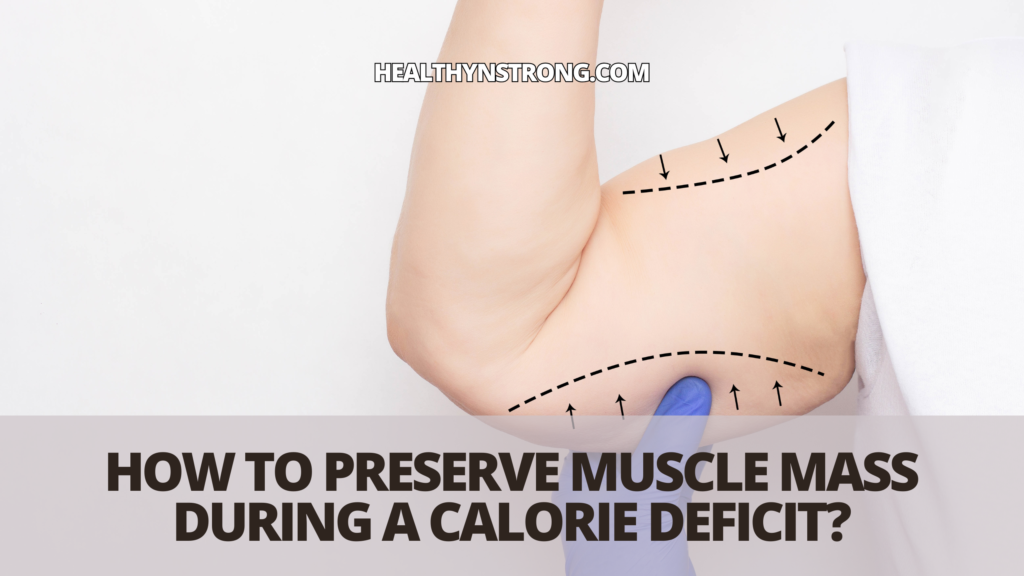
Preserving muscle mass during a calorie deficit requires specific strategies. Follow these tips to minimize muscle loss:
- Gradually reduce calorie intake instead of drastic cuts.
- Prioritize protein intake to support muscle growth and repair.
- Implement regular resistance training to stimulate muscle maintenance.
- Monitor your progress and adjust your approach as needed.
- Ensure adequate rest and recovery to support muscle growth.
Running and Muscle Mass: Can You Do It Simultaneously?

Running is often perceived as detrimental to muscle mass due to its potential to increase muscle breakdown. However, when approached strategically, it’s possible to incorporate running without experiencing significant muscle loss. Follow these guidelines:
- Consider shorter, high-intensity runs instead of long-distance cardio sessions.
- Combine running with resistance training to stimulate muscle retention.
- Fuel your runs with appropriate nutrition to support energy and recovery.
- Pay attention to your body’s signals and adjust your training accordingly.
Women and Fat Loss: How to Lose Fat without Sacrificing Muscle

Women often face unique challenges when it comes to fat loss and muscle preservation. Fortunately, with the right approach, it’s possible to achieve both simultaneously. Here’s how:
- Focus on strength training to build and maintain muscle mass.
- Incorporate high-intensity interval training (HIIT) for efficient fat burning.
- Consume an adequate amount of protein to support muscle growth.
- Avoid overly restrictive diets and prioritize overall health and well-being.
How Fast Can You Lose Fat Without Losing Muscle?

The rate of fat loss without muscle loss varies depending on several factors, including your starting point, diet, training program, and genetics.
Generally, a safe and sustainable rate is around 0.5-1 pound of fat loss per week. More rapid weight loss may increase the risk of muscle loss.
Conclusion

Cutting without losing muscle is a challenging but achievable goal. By implementing the strategies outlined in this guide, you can optimize fat loss while preserving and even building muscle mass.
Remember, consistency, proper nutrition, and a well-designed training program are key.
So, take the knowledge you’ve gained from this guide and start your journey toward a leaner, stronger, and healthier you.
Take action today, and you’ll be amazed by the results. Happy cutting!
References
- Deibert, P., König, D., Schmidt-Trucksaess, A., Zaenker, K.S., Frey, I., Landmann, U. and Berg, A., 2004. Weight loss without losing muscle mass in pre-obese and obese subjects induced by a high-soy-protein diet. International journal of obesity, 28(10), pp.1349-1352.
- Liberman, K., Forti, L.N., Beyer, I. and Bautmans, I., 2017. The effects of exercise on muscle strength, body composition, physical functioning and the inflammatory profile of older adults: a systematic review. Current opinion in clinical nutrition and metabolic care, 20(1), pp.30-53.
- Peterson, M.D., Rhea, M.R., Sen, A. and Gordon, P.M., 2010. Resistance exercise for muscular strength in older adults: a meta-analysis. Ageing research reviews, 9(3), pp.226-237.
- Smith, H. and BS-Dietetics, N.P., How To Lose Fat Without Losing Muscle.
- Avi, B., How To Lose Fat Without Losing Muscle (Science Backed).
Disclaimer: It’s important to consult with a healthcare professional or certified trainer before significantly changing your diet or exercise routine. The information provided in this blog post is for educational purposes only and should not replace professional advice.
TRENDING NOW
- How to Burn Face Fat: Proven Ways

- How to Cut Without Losing Muscle: The Ultimate Guide to Effective Fat Loss

- Discover How Grapes Boost Your Health and Well-being

- How to Lose Fat in Fingers: Effective Strategies and Exercises

- Is Mustard Keto?

- Is Guava Keto-Friendly?

- Is Lemon Water Good For Weight Loss?

- How To Lose Weight in 4 Easy Steps?

- 9 Reasons Why Sweet Potatoes are a Great Choice for Weight Loss

- Are Oranges Good for Weight Loss?

- How To Do Bicycle Crunches?

- What Does The Bicycle Workout Do?

- Is Treadmill Or Stairmaster Better For Weight Loss?

- Is Cycling Better Than Treadmill?

- Does Treadmill Help With Weight Loss ?

